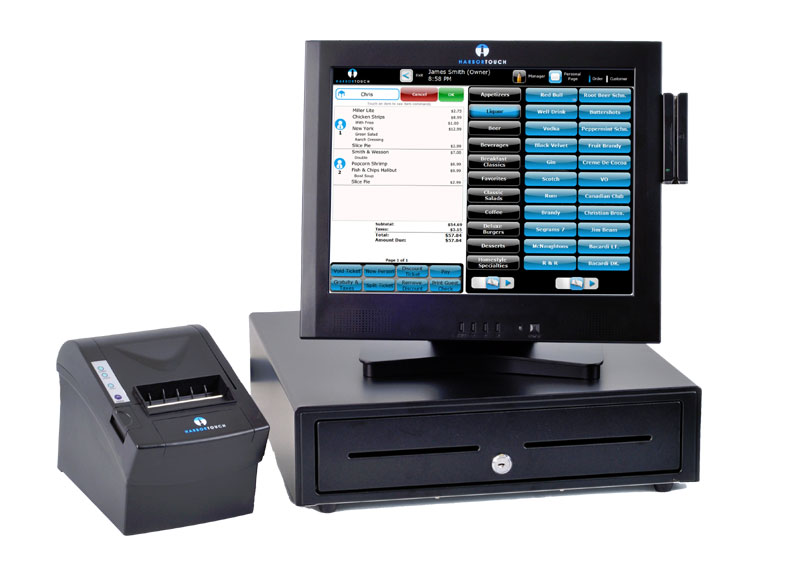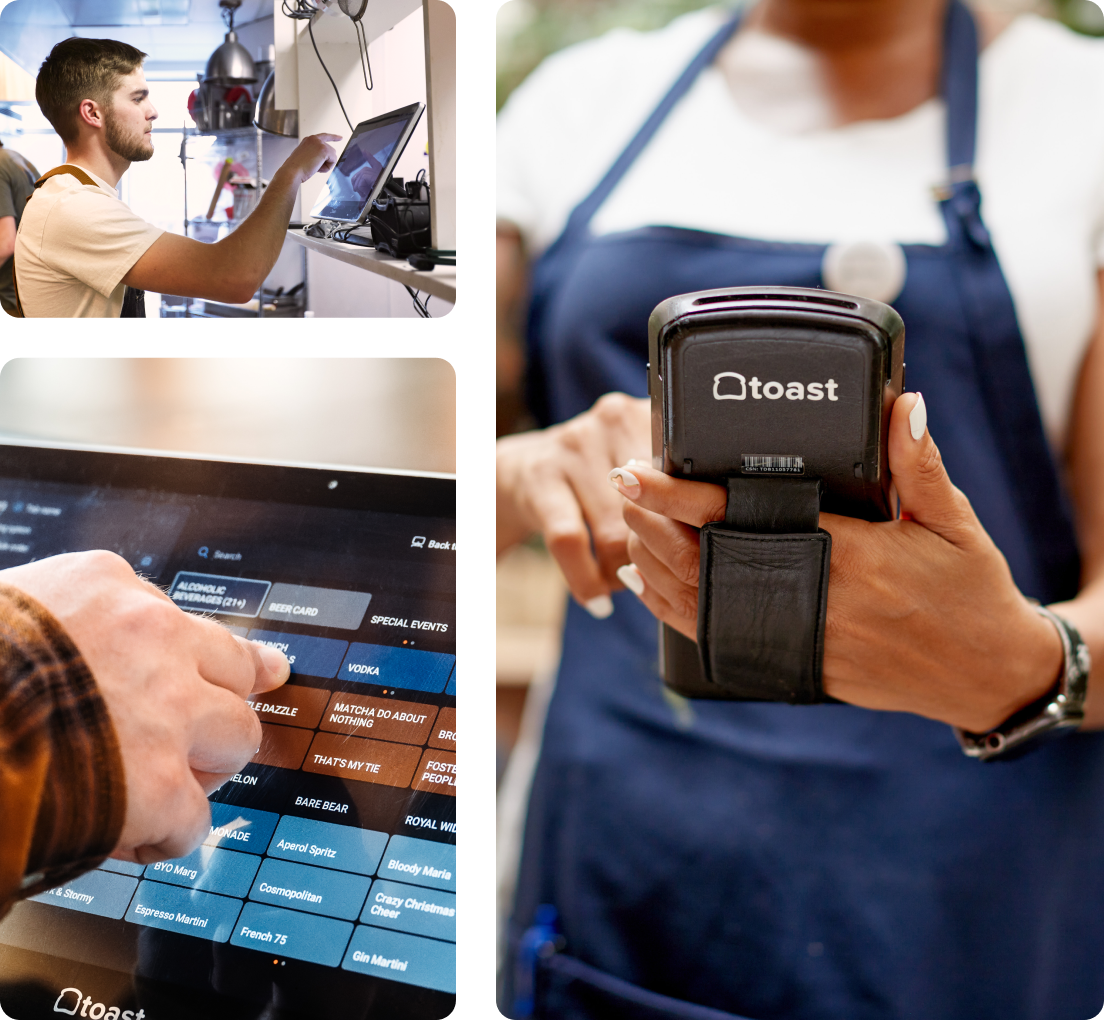How Restaurant POS Software solutions transform dining operations
Wiki Article
How POS System Works: A Comprehensive Overview for Entrpreneurs
A POS system offers as a crucial device for modern-day businesses, incorporating different elements to streamline operations. It encompasses hardware like barcode scanners and software program up for sale monitoring. This system not only processes transactions but also manages inventory and evaluates customer actions. Recognizing its performance can significantly impact an organization's effectiveness and decision-making. What are the crucial elements that add to this efficiency? Exploring these elements provides valuable understandings.Understanding the Elements of a POS System
A Factor of Sale (POS) system is made up of a number of key parts that work with each other to promote deals and take care of service operations. At its core, the equipment consists of gadgets such as a sales register, barcode scanner, receipt printer, and settlement incurable, all important for processing sales (Restaurant POS Software). The software application part manages stock, sales monitoring, and customer data, giving important understandings for business decisions.Additionally, data sources save transaction records and consumer information, ensuring data stability and security. Network connectivity allows real-time updates and accessibility to cloud-based services, enhancing functional performance. Interface, made for ease of use, permit staff to navigate the system swiftly, minimizing training time. Together, these elements develop a natural system that streamlines the sales process, boosts customer support, and help in effective management of service sources. Recognizing these parts is crucial for organization proprietors looking for to maximize their POS systemsHow Sales Transactions Are Processed
When a client decides to buy, the sales purchase initiates a collection of organized actions within the POS system. Initially, the cashier inputs the products being bought, which are scanned through a barcode reader or by hand entered. This activity retrieves item information, consisting of prices and relevant taxes, from the system's database.Next, the consumer exists with the overall quantity due. The POS system then processes the payment, whether via money, bank card, or mobile settlement techniques. For electronic settlements, the POS safely communicates with settlement cpus to authorize and confirm the transaction.Once the repayment is confirmed, the system creates an invoice, which can be printed or sent out digitally. This invoice works as evidence of acquisition for the customer. The purchase data is recorded in the system, making sure exact sales records and economic tracking for the service.Inventory Administration and Monitoring
Efficient supply administration and monitoring are crucial parts of a POS system, as they ensure that businesses preserve perfect supply levels and lessen inconsistencies. A durable POS system permits real-time inventory updates, reflecting sales and returns immediately. This enables entrepreneur to keep an eye on supply levels precisely, guaranteeing that popular products are easily available while avoiding overstocking of much less prominent products.Additionally, advanced POS systems provide features such as automated stock informs and reorder suggestions, improving the procurement process. Barcoding and RFID innovation improve accuracy in tracking stock motion, decreasing human error. Extensive coverage devices supply insights into stock turn over prices, helping organizations make educated decisions regarding purchasing and product offerings. Inevitably, efficient stock management through a POS system Recommended Reading not only boosts functional performance yet also enhances customer contentment by guaranteeing product schedule.
Examining Customer Information and Insights
Consumer data analysis functions as a powerful device for companies using a POS system. By gathering and examining deal information, businesses can uncover useful understandings about customer habits and choices. This analysis enables them to recognize acquiring trends, peak shopping times, and prominent products, consequently educating inventory decisions and advertising strategies.Additionally, businesses can section their client base, enabling individualized marketing efforts that cater to particular demographics or buying routines. Comprehending consumer commitment patterns likewise assists in establishing targeted promotions and benefits programs.The data obtained from a POS system can also reveal insights into client comments, making it possible for businesses to make informed choices concerning product offerings and service improvements. Inevitably, leveraging consumer information effectively can boost the overall purchasing experience, foster consumer complete satisfaction, and drive profits growth.
Advantages of Executing a POS System
Applying a POS system uses numerous benefits that can substantially enhance organization operations. To start with, it improves purchase processes, minimizing delay times and enhancing consumer satisfaction. By automating sales procedures, companies can lessen human mistake and guarantee precise record-keeping. In addition, a POS system offers beneficial data analytics, allowing proprietors to track sales fads and stock degrees in real-time. This insight supports notified decision-making, aiding to maximize stock administration and advertising and marketing strategies.Moreover, numerous POS systems integrate with various other business devices, such as audit software program, simplifying financial administration. Boosted staff member monitoring attributes, such Get More Information as tracking hours and efficiency, further add to operational efficiency.Lastly, the application of a POS system can result in raised earnings via improved client experiences and calculated understandings, inevitably fostering business growth and sustainability.
Frequently Asked Questions
What Types of Services Can Benefit From a POS System?

Just how much Does a POS System Normally Cost?
The expense of a POS system commonly ranges from a few hundred to numerous thousand bucks, learn the facts here now depending on functions, equipment, and software - Restaurant POS Software. Companies have to consider ongoing charges for upkeep, assistance, and transaction processing when budgeting
Can I Integrate a POS System With Existing Software?
Integrating a POS system with existing software is often feasible. Many systems supply APIs or integrated compatibility attributes, enabling services to enhance procedures and enhance functionality by attaching different software application applications effectively.What Training Is Needed for Team to Utilize a POS System?
Training for team to make use of a POS system commonly consists of understanding software application performances, processing purchases, managing stock, and taking care of consumer communications - Restaurant POS Software. Practical demonstrations and hands-on practice enhance proficiency and self-confidence in operation the system effectivelyWhat Occurs if the Net Goes Down While Utilizing a POS System?
If the web decreases during POS system use, deals might be interrupted. Lots of systems offer offline capacities, allowing fundamental procedures to continue, however complete functionality, consisting of real-time inventory updates, will be restricted.Report this wiki page